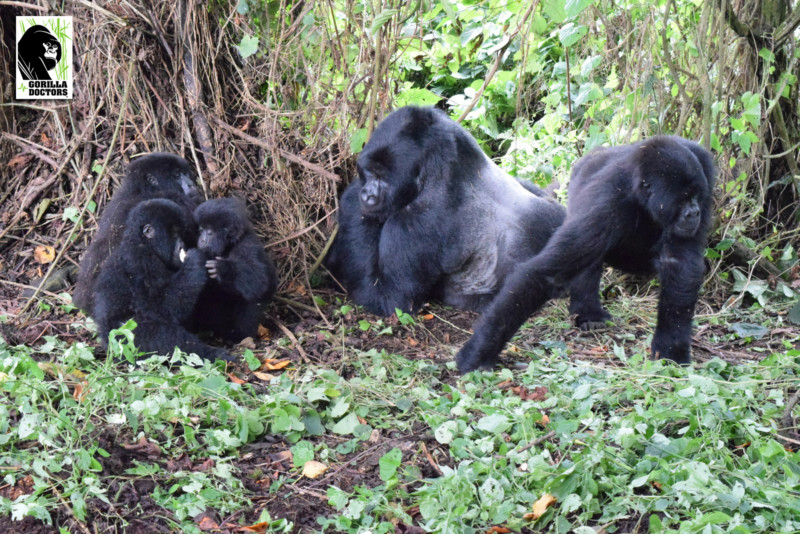Gorilla Doctors Helps Get 2018 Bwindi-Sarambwe Census Underway
By Gorilla Doctors Staff on Wednesday, March 28th, 2018 in Blog.Every 5 years or so, the governments of Rwanda, Uganda and Democratic Republic of the Congo (DRC) work together with gorilla conservation partners to do a complete population count, or census, of mountain gorillas. The programs are staggered: the most recent census of the Virunga Massif was conducted in 2016, and in mid-March, the Bwindi Impenetrable National Park census got underway. The Bwindi census will help provide an accurate estimate of the number of mountain gorillas living in the world, once numbers are combined with the results of the 2016 Virunga Massif census.
Census teams will systematically sweep through the forest, following gorilla trails, counting night nests, and collecting fecal samples. As well, census teams will make note of any observations of signs of other large mammals (like forest elephants), and evidence of illegal activities taking place in the park and reserve (like snares). Gorilla Doctors’ Dr. Gaspard, who participated in the Virunga Massif census in 2016, has been helping train census workers and is helping get supplies organized.
Fecal samples collected from night nests are preserved in ethanol so that they can be analyzed for host DNA to calculate an accurate count of the number of individual gorillas in the population. Samples are also being collected and preserved so that Gorilla Doctors and collaborators can study the gorilla gastrointestinal microbiome, and to study the genetics of parasites in gorillas. We are also collecting fecal samples in a medium called RNALater™ to test samples for bacterial and viral pathogens. All samples are split and shared with other partners, including the The Robert Koch Institute in Germany and Conservation through Public Health in Uganda. Gorilla Doctors is helping process and divide the samples, and is making sure that samples are kept at the proper temperatures.
—
The census is being conducted by protected area authorities in Uganda and the Democratic Republic of the Congo (Uganda Wildlife Authority or UWA, and L’Institut Congolais pour la Conservation de la Nature, or ICCN) under the transboundary framework of the Greater Virunga Transboundary Collaboration, and is being coordinated in the field by the International Gorilla Conservation Programme (a coalition of Fauna & Flora International and WWF). The census is also supported by the Rwanda Development Board, Max Planck Institute for Evolutionary Anthropology, Dian Fossey Gorilla Fund International, Institute of Tropical Forest Conservation, Conservation Through Public Health, Wildlife Conservation Society Uganda Country Office, WWF Uganda Country Office, and Bwindi Mgahinga Conservation Trust. The census is being funded by Fauna & Flora International, WWF, and Partners in Conservation at the Columbus Zoo & Aquarium.


 Donate
Donate
